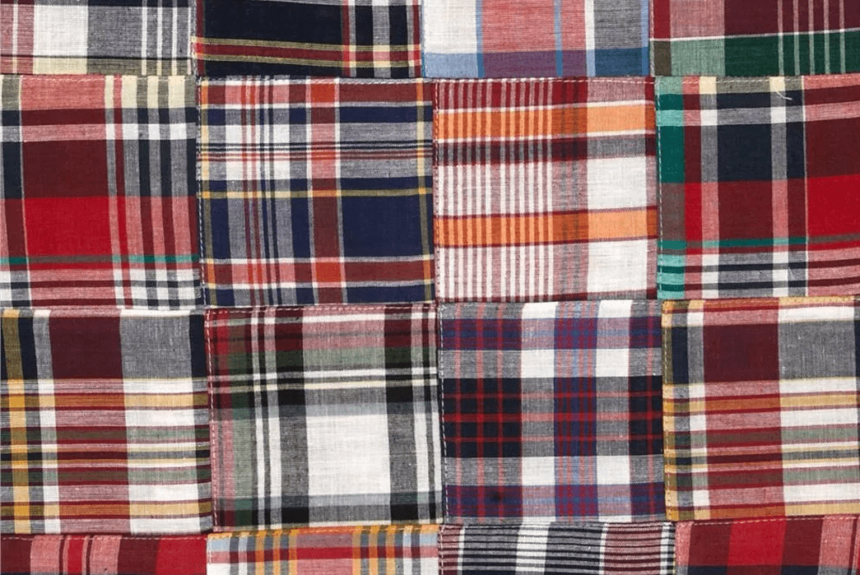Bleeding Madras|Source: https://www.heddels.com/
Though the name scares for a while, “Bleeding Madras” has nothing to do with bleeding blood. It is just hand made fabric made in India. Madras is taken from the previous name of Chennai, the capital of Tamilnadu. The dyes used to make these fabrics were not colourfast and bleeds once they are washed. Such faded colour gives a fresh and new look to the garments.
“Bleeding Madras” is completely handwoven from yarns dyed with native vegetable colourings. The warp of fabric was generally dyed in indigo based on colour selection. Turmeric was used in case of colour choice of yellow. The indigo and turmeric were mixed to provide a green colour which runs as weft. This combination, once soaked into water, offer new shade. It was also known as Madras checks, real Madras handkerchief, George cloth, Guinea cloth or bleeding Madras.
It was extremely common in 1960. Its popularity was not limited to India but reached London and California. As early as the 1930s, bleeding Madras became a symbol of status. It is vividly observed that American tourists donning the fabric going for a vacation in the Caribbean during the great depression.
It was exported to London, where it was auctioned to traders who used it to barter for slaves in West Africa.
The credit for popularising the product is given to Captain C. P. Krishnan Nair who was also the founder of The Leela Palaces, Hotels and Resorts.

